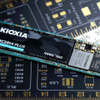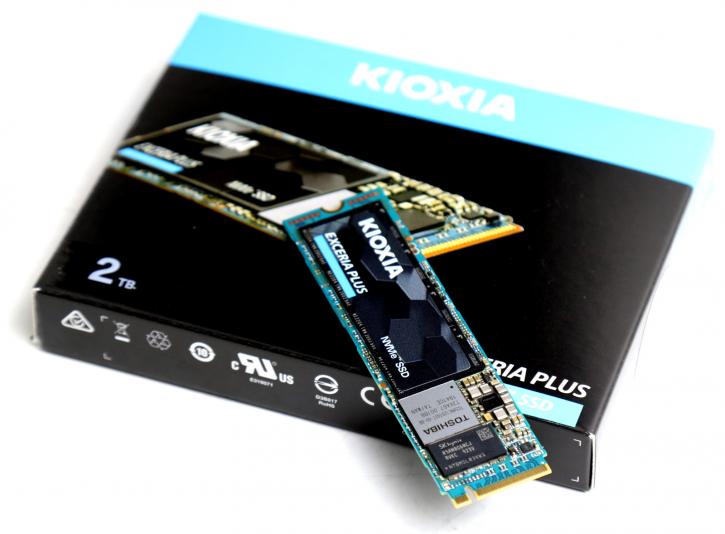Introduction
Kioxia Exceria PLUS NVMe SSD (2TB) review
Shifting into 6th gear on a PCIe Gen 3.0 M.2 SSD from Kioxia, previously Toshiba memory
But wait there's another model we need tore view, yep meet the PLUS edition. We test out the new enthusiast NVMe M.2 SSD from Kioxia (formerly Toshiba memory). Enthusiast in the PCIe Gen 3.0 range though, meet the all-new Exceria PLUS NVMe SSD in a 2TB capacity that we'll review today. Kioxia is offering the Exceria PLUS series that will become available as a more enthusiast offering. You know it, they will have available a 2.5" SSD, then a mainstream solution in the Exceria range and then an enthusiast solution called Exceria Plus that we test in this review.
Based on PCIe Gen3x4 NVMe 1.3 technology the Exceria PLUS 2TB model waves hi from our test-bench. Is makes use of 96-Layer 3D NAND, which is written as TLC (Triple level cell) is armed with a faster controller and has an even bigger DRAM cache buffer. This is a serious SSD for people that are serious about PC performance. For our tested 2TB variant, the manufacturer specifies a lifespan of 800 TBW (total bytes written) and a proper 5-year warranty (whichever once comes first). The specs overall are fast, for any end-user, but will this unit deliver what it claims? M2 is the interesting form factor, these small storage units are evolving from being "just as fast" as a regular SSD towards double, triple, quadruple, quintuple, sextuple, septuple and perhaps in the future even octuple that performance. It comes in a different package, M.2. Using the PCIe lanes interface it is so much more capable as it can deal with way more bandwidth using PCI-Express lanes. As such, M.2 solutions are intended for high-end and enthusiast-class motherboards and laptops. These M.2 units use the NVMe 1.3 protocol, and that means storage technology at millennium falcon hyper-fast speeds while remaining competitive in pricing.
- Max Sequential Read - Up to 3400 MBps
- Max Sequential Write - Up to 3200 MBps
- 4KB Random Read - Up to 680,000 IOPS
- 4KB Random Write - Up to 620,000 IOPS
- Endurance (TBW) up to 800 TBW (2 TB model)
While the stability and safety of your data have become a number one priority for the manufacturers, the technology keeps advancing at as fast a pace as it does, the performance numbers a good SSD offers these days are simply breathtaking.
The SSD is a Non-Volatile Memory Express (NVMe 1.3) M.2 form factor SSD; it has been fitted with new Vertically stacked NAND written as TLC. The performance numbers of a proper SATA3 SSD offers these days are simply excellent, but with the more niche NVMe SSDs, you can easily quadruple performance, which offers serious numbers. The unit follows a smaller M.2 2280 form factor (8cm), so it will fit on most ATX motherboards capable of M.2 just fine. Next page and onwards into the review.


